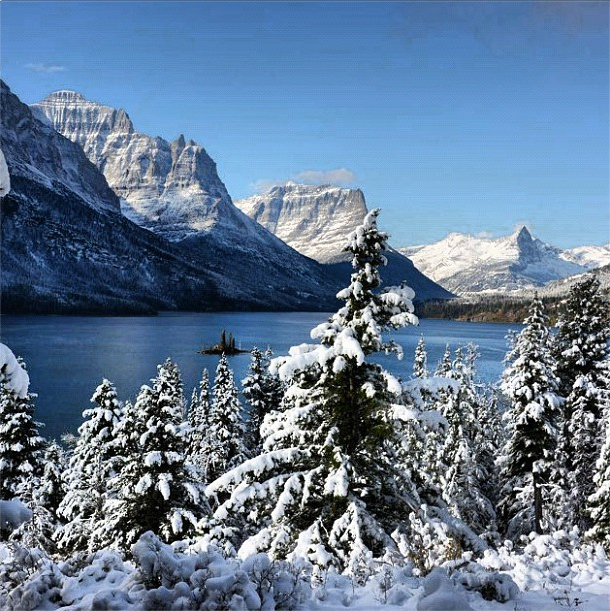
Image: Snow Falls on Glacier National Park

For many people in the United States, fall means pumpkins, crisp weather and shorter days. In Montana's Glacier National Park, fall means snow.
The U.S. Department of the Interior captured the photo above on Oct. 4 in Glacier National Park, where the fall foliage has been on full display. Now there's a coat of white atop the oranges, reds and fading greens.
The photo was taken at Wild Goose Island, a popular overlook in the park. The photo shows Saint Mary Lake, the second largest lake in Glacier National Park (Lake McDonald is the largest). The lake is 4,484 feet (1,367 meters) above sea level, about 1,500 feet (460 m) higher than Lake McDonald, so Saint Mary's waters are often much colder, rarely warming to higher than 50 degrees Fahrenheit (10 degrees Celsius).
The lake has a surface area of nearly 4,000 acres, stretches nearly 10 miles (1.6 km) long and is 300 feet (91 m) deep.
Parallel to the lake is the Going-to-the-Sun Road, the only road through the heart of Glacier National Park . The road crosses the Continental Divide — the mountainous barrier that separates the rivers that drain into the different oceans — at Logan Pass, which is the highest point along the road at 6,646 feet (2,026 m).
Glacier National Park is known to Native Americans as the "Shining Mountains" and the "Backbone of the World." The park preserves more than a million acres of forests, alpine meadows, lakes, rugged peaks and glacial-carved valleys in the Northern Rocky Mountains. The park got its name from the stunning glacier-carved terrain and glaciers descended from the ice ages of 10,000 years past.
Follow OurAmazingPlanet for the latest in Earth science and exploration news on Twitter @OAPlanet. We're also on Facebook & Google+.
Sign up for the Live Science daily newsletter now
Get the world’s most fascinating discoveries delivered straight to your inbox.









